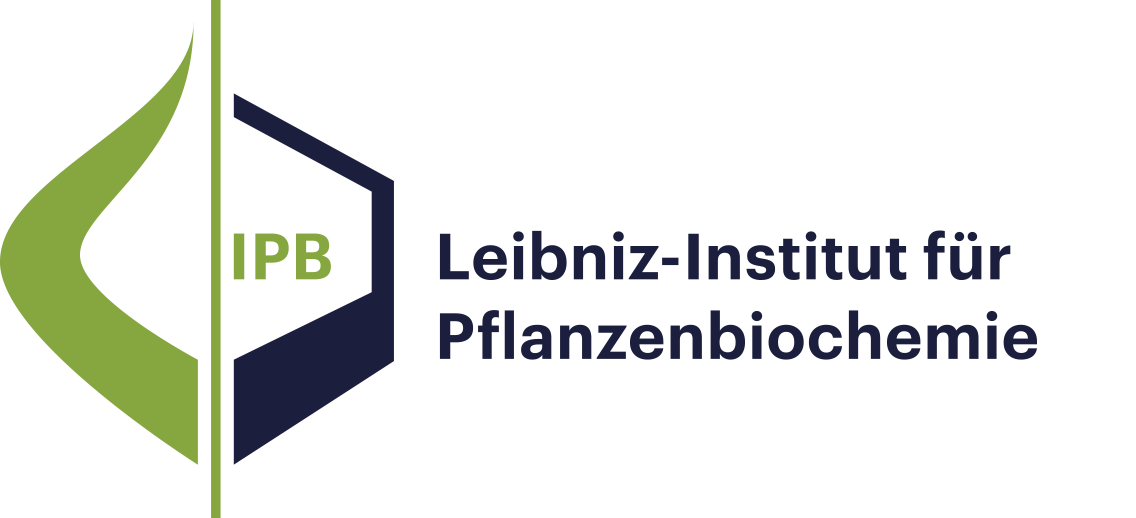- Ergebnisse als:
- Druckansicht
- Endnote (RIS)
- BibTeX
- Tabelle: CSV | HTML
Publikation
Publikation
Publikation
Publikation
Publikation
Publikation
Publikation
Publikation
Publikation
Publikation
Leitbild und Forschungsprofil
Molekulare Signalverarbeitung
Natur- und Wirkstoffchemie
Biochemie pflanzlicher Interaktionen
Stoffwechsel- und Zellbiologie
Unabhängige Nachwuchsgruppen
Program Center MetaCom
Publikationen
Gute Wissenschaftliche Praxis
Forschungsförderung
Netzwerke und Verbundprojekte
Symposien und Kolloquien
Alumni-Forschungsgruppen
Publikationen
Publikation
0
Publikation
The preprophase band (PPB) is a transient cytokinetic structure that marks the future division plane at the onset of mitosis. The PPB forms a dense cortical ring of mainly microtubules, actin filaments, endoplasmic reticulum, and associated proteins that encircles the nucleus of mitotic cells. After PPB disassembly, the positional information is preserved by the cortical division zone (CDZ). The formation of the PPB and its contribution to timely CDZ set-up involves activities of functionally distinct microtubule-associated proteins (MAPs) that interact physically and genetically to support robust division plane orientation in plants. Recent studies identified two types of plant-specific MAPs as key regulators of PPB formation, the TON1 RECRUITMENT MOTIF (TRM) and IQ67 DOMAIN (IQD) families. Both families share hallmarks of disordered scaffold proteins. Interactions of IQDs and TRMs with multiple binding partners, including the microtubule severing KATANIN1, may provide a molecular framework to coordinate PPB formation, maturation, and disassembly.
Publikation
Plant specialized metabolites are often synthesized and stored in dedicated morphological structures such as glandular trichomes, resin ducts, or laticifers where they accumulate in large concentrations. How this high productivity is achieved is still elusive, in particular, with respect to the interface between primary and specialized metabolism. Here, we focus on glandular trichomes to survey recent progress in understanding how plant metabolic cell factories manage to balance homeostasis of essential central metabolites while producing large quantities of compounds that constitute a metabolic sink. In particular, we review the role of gene duplications, transcription factors and photosynthesis.
Publikation
Chemistry assigns phosphate (Pi) dominant roles in metabolism; however, it also renders the macronutrient a genuinely limiting factor of plant productivity. Pi bioavailability is restricted by low Pi mobility in soil and antagonized by metallic toxicities, which force roots to actively seek and selectively acquire the vital element. During the past few years, a first conceptual outline has emerged of the sensory mechanisms at root tips, which monitor external Pi and transmit the edaphic cue to inform root development. This review highlights new aspects of the Pi acquisition strategy of Arabidopsis roots, as well as a framework of local Pi sensing in the context of antagonistic interactions between Pi and its major associated metallic cations, Fe3+ and Al3+.
Publikation
A series of 2-(acetamide-2-yl)-imidazolines (II) with 5 points of diversity were prepared by an Ugi-4CR–Staudinger–aza-Wittig-sequence starting from simple azidoalkylamines. The intramolecular aza-Wittig cyclization between the iminophosphane and the tertiary amide of the Ugi product (I) was effected by short microwave irradiation. Competitive cyclization to the secondary amide was not relevant, however, in some cases subsequent formation of the bicyclic ortho-amidines (III) was observed.
Publikation
The phytohormone jasmonate (JA) plays essential roles in plant growth, development and defense. In response to the JA signal, the CORONATINE INSENSITIVE 1 (COI1)-based SCF complexes recruit JASMONATE ZIM-domain (JAZ) repressors for ubiquitination and degradation, and subsequently regulate their downstream signaling components essential for various JA responses. Tremendous progress has been made in understanding the JA signaling pathway and its crosstalk with other phytohormone pathways during the past two decades. Recent studies have revealed that a variety of positive and negative regulators act as targets of JAZs to control distinctive JA responses, and that JAZs and these regulators function as crucial interfaces to mediate synergy and antagonism between JA and other phytohormones. Owing to different regulatory players in JA perception and JA signaling, a fine-tuning of JA-dependent processes in plant growth, development and defense is achieved. In this review, we will summarize the latest progresses in JA signaling and its crosstalk with gibberellin and ethylene.
Publikation
A one-pot procedure for the phosphorylation of alcohols provides the corresponding phosphate monoesters in improved yields. The protocol features the use of tetrabutylammonium hydrogen phosphate and trichloroacetonitrile, followed by purification of the crude product by flash chromatography on silica gel. The final step, cation exchange chromatography, affords the organophosphates as ammonium salts that are usually required for biochemical applications. The mechanism appears to be phosphate rather than alcohol activation by trichloroacetonitrile.
Publikation
The synthesis and applications of 4-isocyanopermethylbutane-1,1,3-triol (IPB) as a new convertible isonitrile (isocyanide) for isocyanide-based multicomponent reactions (IMCRs) like Ugi, Ugi-Smiles, and Passerini reactions are described. The primary products obtained from these IMCRs can be converted into highly activated N-acylpyrroles, which upon treatment with nucleophiles can be transformed into carboxylic acids, esters, amides, alcohols, and olefins. In this sense the reagent can be seen as a neutral carbanion equivalent to formate (HO2C−), and carboxylates or carboxamides etc. (RNu-CO−).
Publikation
Indazolones are medicinally relevant targets. Herein we disclose an improved synthesis to N′-(acetamido-2-yl)-substituted indazolones with four points of diversity introduced by Ugi-[M]-amination and -amidation. The ring closure can be achieved by either conventional palladium catalysis or with a ligandless copper protocol. When α-unbranched isocyanides were employed the sole cyclization products of the copper catalyzed reactions are the hitherto undescribed 2-hydroxy-3H-3,4a,9a-triaza-fluorene-4,9-diones.
Publikation
A variety of 1,6-enynes were synthesized by an Ugi-reaction and further elaborated by a PdII/IV catalyzed oxidative cyclization to produce N-substituted 3-aza-bicyclo[3.1.0]hexan-2-ones. Different substitution patterns were tested to examine the scope and limitations of the amide tethered substrates.

